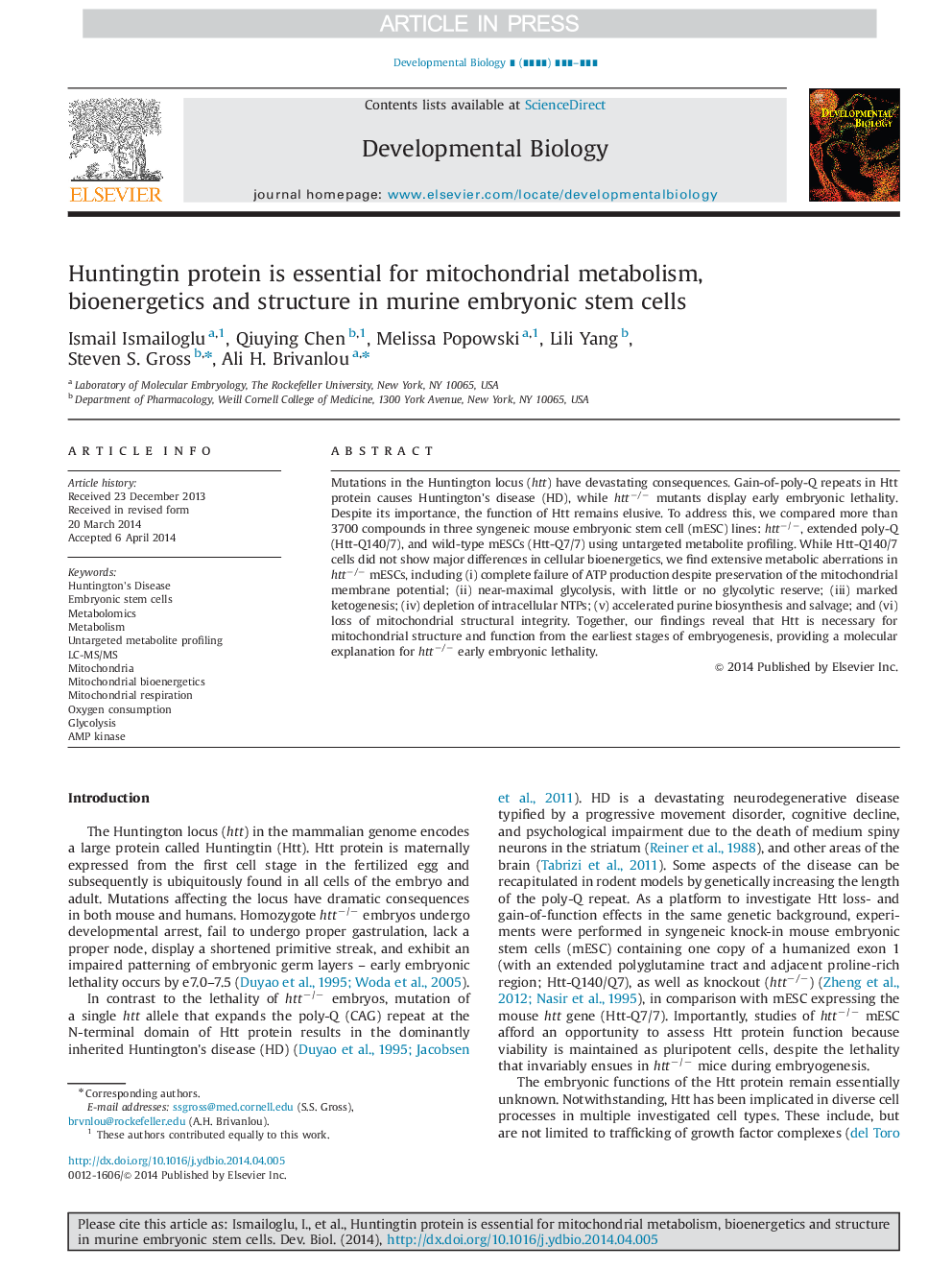| Article ID | Journal | Published Year | Pages | File Type |
|---|---|---|---|---|
| 10931663 | Developmental Biology | 2014 | 11 Pages |
Abstract
Mutations in the Huntington locus (htt) have devastating consequences. Gain-of-poly-Q repeats in Htt protein causes Huntington׳s disease (HD), while httâ/â mutants display early embryonic lethality. Despite its importance, the function of Htt remains elusive. To address this, we compared more than 3700 compounds in three syngeneic mouse embryonic stem cell (mESC) lines: httâ/â, extended poly-Q (Htt-Q140/7), and wild-type mESCs (Htt-Q7/7) using untargeted metabolite profiling. While Htt-Q140/7 cells did not show major differences in cellular bioenergetics, we find extensive metabolic aberrations in httâ/â mESCs, including (i) complete failure of ATP production despite preservation of the mitochondrial membrane potential; (ii) near-maximal glycolysis, with little or no glycolytic reserve; (iii) marked ketogenesis; (iv) depletion of intracellular NTPs; (v) accelerated purine biosynthesis and salvage; and (vi) loss of mitochondrial structural integrity. Together, our findings reveal that Htt is necessary for mitochondrial structure and function from the earliest stages of embryogenesis, providing a molecular explanation for httâ/â early embryonic lethality.
Keywords
Related Topics
Life Sciences
Biochemistry, Genetics and Molecular Biology
Cell Biology
Authors
Ismail Ismailoglu, Qiuying Chen, Melissa Popowski, Lili Yang, Steven S. Gross, Ali H. Brivanlou,
